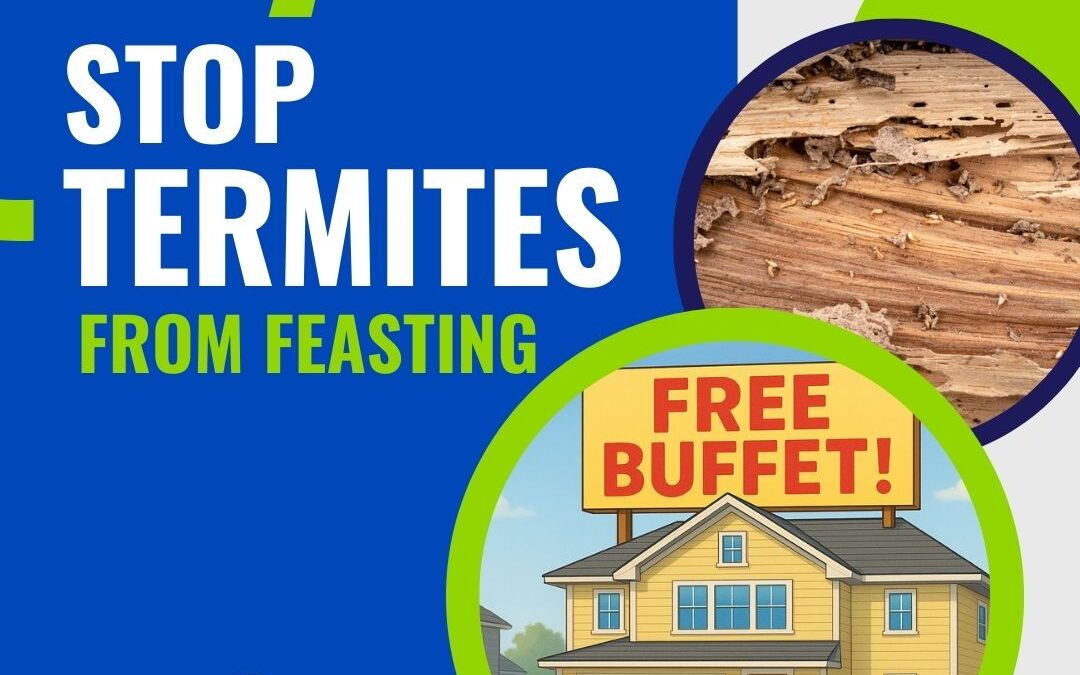Discovering termites can be unsettling, but knowing the signs is the first step toward protecting your home. Termites often work silently, causing significant damage before they’re noticed. Being vigilant can save you considerable stress and expense down the line. Are you keeping an eye out for these subtle invaders?
Spot mud tubes
Termites, particularly subterranean types, build small, pencil-sized tunnels out of soil and wood particles. These mud tubes act as protected highways, allowing them to travel between their colony in the soil and their food source (your house!). Look for these tubes along foundations, walls, crawl spaces, and support piers. They’re a classic sign of termite activity.
Check wood damage
Termite damage often looks like water damage – buckling wood, swollen floors or ceilings, or visible mazes within walls or furniture. Sometimes, the wood might appear fine on the outside but crumble easily when probed. Termites eat wood from the inside out, so exterior surfaces might hide extensive internal damage. Tap wood structures regularly; if they sound hollow, it’s time for a closer look.
Listen for hollow sounds
As mentioned, wood damaged by termites often sounds hollow when tapped. This is because they consume the cellulose from within, leaving only a thin veneer of wood or paint. Gently tapping on baseboards, window sills, and wooden beams can reveal hidden activity.
Watch for swarmers
Termite swarmers (often mistaken for flying ants) are young, winged termites that emerge from the colony to mate and establish new colonies. You might see them, or just their discarded wings, near windows, doors, or light sources, especially in the spring. Seeing swarmers indoors is a definite sign of an active infestation [5].
Pro tip: Keep gutters clean and ensure water drains away from your foundation. Termites love moisture, and reducing dampness around your home makes it less attractive to them [6].
What Makes Professional Treatment Essential?
While DIY pest control might seem tempting, termite infestations require expert handling. Professionals have the training, equipment, and access to specialized products needed for effective elimination and prevention. Trying to tackle termites yourself can often lead to incomplete treatment, allowing the colony to recover and continue damaging your home. Why risk it when expert help is available?
Understand inspection methods
Professional pest control technicians, like those at Snowball Pest Control, conduct thorough inspections that go far beyond a casual glance. They know exactly where termites hide – in crawl spaces, attics, wall voids, and around foundations. They use specialized tools like moisture meters and sounding devices to detect activity that’s invisible to the untrained eye. A comprehensive professional inspection identifies the specific termite species, the extent of the infestation, and any contributing conditions.
Learn about treatment options
Professionals offer a range of termite treatment options tailored to your specific situation. These aren’t typically available over-the-counter and require precise application. Common methods include:
- Liquid Barrier Treatments: Applying termiticides to the soil around and under the foundation creates a continuous protective barrier.
- Termite Baits: Strategically placed bait stations contain slow-acting substances that foraging termites carry back to the colony, eventually eliminating it.
- Wood Treatments: Direct application of preservatives or termiticides to vulnerable wood structures. Choosing the right method depends on factors like the type of termite, construction of your home, and environmental considerations.
See prevention techniques
Beyond eliminating existing termites, professionals implement long-term prevention strategies. This might involve creating physical barriers during construction, applying preventive treatments, and advising on landscaping or structural modifications to make your home less susceptible. Effective prevention is key to avoiding future termite headaches.
Pro tip: Ask potential pest control providers about their experience, licensing, insurance, and the specific termite treatment options they recommend for your situation. Don’t hesitate to get multiple quotes.
Here’s How We Eliminate Termites
At Snowball Pest Control, we take a systematic approach to ensure termites are gone for good. Our process involves careful assessment, targeted treatment, and ongoing monitoring. We understand that every home is different, so we personalize our strategy to provide the most effective solution for your specific needs, always prioritizing safety for your family and pets.
Deploy barrier treatments
The most common professional technique involves creating a protective zone around your home. We use specialized equipment to apply liquid termiticides, such as fipronil or imidacloprid-based products, into the soil along the foundation [6]. This creates an invisible barrier that termites cannot detect. When they tunnel through the treated soil, they contact the termiticide and carry it back to the colony, leading to its elimination. Proper application is crucial to avoid contamination and ensure effectiveness, which is why professional handling is essential.
Apply targeted solutions
Sometimes, barrier treatments aren’t enough or aren’t suitable. In these cases, or as a supplement, we use targeted methods:
- Bait Systems: We install bait stations in strategic locations. These contain materials termites find attractive, laced with a slow-acting insecticide [5]. Foraging termites feed on the bait and share it within the colony, leading to gradual but complete elimination.
- Direct Wood Treatment: For active infestations within the structure, we may directly treat affected wood with borates or other termiticides [6].
- Foam Applications: In hard-to-reach areas like wall voids, foam treatments can expand to cover surfaces and eliminate hidden termites.
Monitor activity levels
Termite control isn’t always a one-and-done deal. We often install monitoring stations or schedule follow-up inspections to ensure the treatment was successful and that no new termite activity has occurred. Bait systems, in particular, require regular checks and replenishment [6].
Prevent future infestations
Our goal isn’t just to get rid of current termites but to keep them from coming back. This involves maintaining the treatment barrier, advising on moisture control, removing wood-to-ground contact, and recommending regular inspections. Consistent prevention is the best defense against future termite threats.
Pro tip: Keep firewood, mulch, and other wood debris stored away from your home’s foundation, as these can attract termites.

